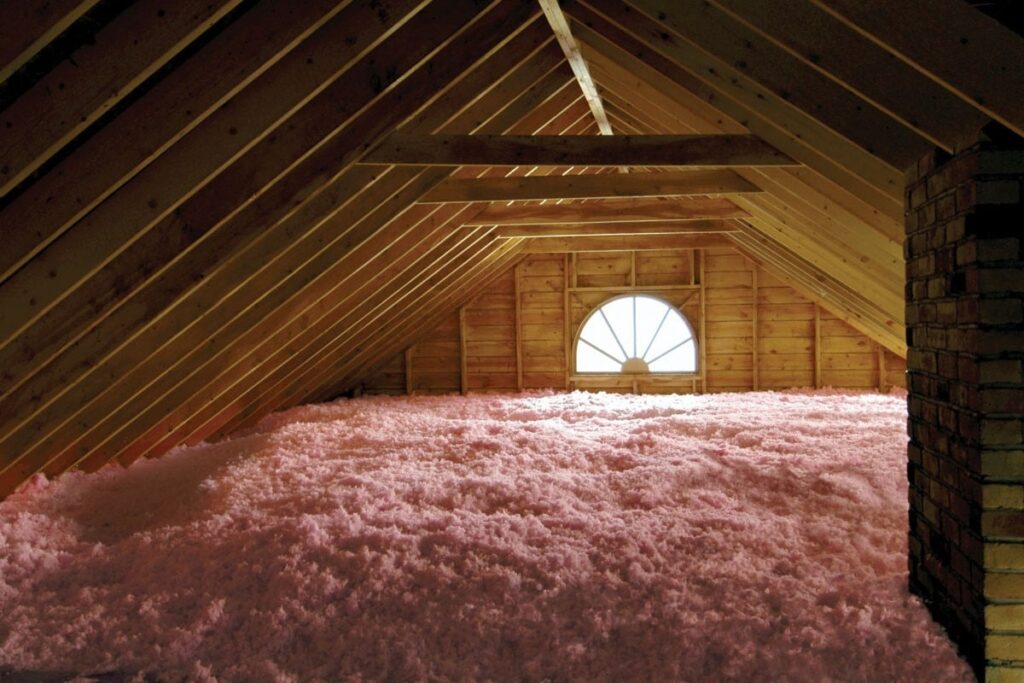When storms leave a bit of a mess behind, it’s crucial to approach repair and cleanup with careful consideration. You’ll want to assess the damage, prioritize your safety, and understand the resources available to you. From professional services to DIY techniques, knowing your options is key. However, navigating the complexities of insurance claims and finding reliable contractors can be daunting. So, how do you ensure you’re making the right choices for effective recovery and long-term resilience?

Assessing Storm Damage
After a storm, assessing the damage is crucial to understanding the extent of repairs needed.
Begin with a storm impact analysis, focusing on the most affected areas of your property. Look for visible signs of damage like broken windows, fallen branches, or water leaks.
Next, conduct a structural integrity evaluation to ensure your home remains safe. Check the foundation, walls, and roof for any weaknesses or shifts caused by the storm.
Document everything with photos and notes, as this will help during the insurance claims process.
By taking these steps, you not only protect your investment but also ensure the safety of everyone in your home.
Swift and thorough assessments can help you regain stability and peace of mind.
Safety Precautions to Consider
When you’re tackling storm damage repair, safety should be your top priority.
Make sure you wear the right personal protective equipment, like gloves and masks, to shield yourself from potential hazards.
Also, be aware of any hazardous materials that could be present, and take the necessary precautions to handle them safely.
Personal Protective Equipment
Wading into storm damage repair can be daunting, but prioritizing your safety with the right personal protective equipment (PPE) is crucial. Proper protective gear not only safeguards you from potential hazards but also boosts your confidence during cleanup efforts.
Make sure you have the following essential items:
- Sturdy gloves to protect your hands from cuts and debris
- Safety goggles to shield your eyes from dust and flying particles
- A hard hat to prevent head injuries from falling objects
- Steel-toed boots for foot protection against heavy items
Before starting, ensure you’ve completed any necessary safety training. This preparation will empower you to tackle storm damage repair while minimizing risks.
Hazardous Material Awareness
How can you ensure your safety while dealing with hazardous materials in storm damage repair? Start by conducting proper material identification. Inspect the area for any potentially hazardous waste, such as chemicals, mold, or contaminated debris.
Always wear appropriate personal protective equipment (PPE) like gloves, masks, and goggles to minimize exposure. If you spot any unknown substances, don’t attempt to handle them yourself; instead, contact professionals trained in hazardous material cleanup.
Ensure good ventilation in the workspace to mitigate inhalation risks. Keep a first-aid kit handy and know the emergency procedures in case of exposure.
Documenting the Damage
Documenting the damage after a storm is crucial for both insurance claims and restoration efforts.
To effectively capture the extent of the destruction, follow these damage photography tips:
- Use natural light to avoid shadows and enhance clarity.
- Take wide shots to showcase overall damage, along with close-ups for details.
- Include timestamps or markers for context.
- Create a detailed inventory checklist of affected items, noting their condition.
Professional Cleanup Services
When storm damage strikes, acting quickly is crucial to minimize further issues.
Professional cleanup services use specialized equipment and follow strict safety protocols to ensure a thorough and secure restoration process.
Trusting experts not only speeds up recovery but also protects your well-being during a challenging time.
Importance of Timely Action
Have you ever considered the consequences of delaying storm damage cleanup? Taking immediate action is crucial for effective restoration.
When you wait, the damage can worsen, leading to more extensive repairs and higher costs. Professional cleanup services provide emergency response to address issues quickly, ensuring your property is restored without unnecessary delays.
Here are some reasons why timely action matters:
- Prevents mold growth: Standing water encourages mold, which can pose health risks.
- Reduces repair costs: Early intervention minimizes extensive damage repairs.
- Protects property value: Quick restoration helps maintain your home’s market value.
- Ensures safety: Immediate cleanup reduces hazards from debris or unstable structures.
Don’t wait—opt for immediate restoration to safeguard your home and well-being.
Specialized Equipment Utilization
Professional cleanup services rely on specialized equipment to tackle storm damage effectively. They use advanced tools like drones for inspections, allowing them to assess hard-to-reach areas quickly and accurately. This technology helps identify structural issues and potential hazards that mightn’t be visible from the ground.
Additionally, moisture detection equipment plays a crucial role in preventing further damage. By pinpointing hidden moisture, professionals can ensure thorough drying and mold prevention, protecting your property from long-term effects.
These tools not only enhance the efficiency of the cleanup process but also provide you with peace of mind, knowing that experts are addressing every aspect of the damage with precision and care. Trusting the right services makes all the difference in recovery.
Safety Protocols and Standards
In the aftermath of a storm, adhering to strict safety protocols and standards is crucial for effective cleanup and repair.
You need to prioritize safety for yourself and your team. Here are some essential safety tips to follow:
- Always wear protective gear, including gloves and masks.
- Assess the area for hazards like downed power lines or unstable structures.
- Follow your emergency response plans to ensure efficient coordination.
- Keep a first aid kit readily available for any injuries.
Incorporating these storm preparedness tips can significantly reduce risks during cleanup efforts.
Remember, safety isn’t just a guideline; it’s a necessity in storm recovery.
DIY Repair Techniques
When storms leave behind damage, tackling repairs yourself can feel daunting, but it’s often manageable with the right approach.
Start by assessing the damage; for roof repairs, check for missing shingles or leaks. Use a sturdy ladder and ensure safety first.
If water’s pooled inside your home, prioritize water extraction; you can use a wet/dry vacuum to remove standing water effectively. Don’t forget to dry out any affected materials to prevent mold growth.
For minor repairs, seal gaps with waterproof caulk and consider applying roofing tar for temporary fixes.
Insurance Claims Process
After addressing any immediate repairs, it’s important to navigate the insurance claims process to get the financial support you need.
Start by reviewing your insurance policy to understand what’s covered. Document the damage thoroughly with photos and notes, as this will help during claim adjustments.
Here’s what to keep in mind:
- Contact your insurance company promptly to file a claim.
- Provide all necessary documentation and details about the damage.
- Keep records of all communications with your insurer.
- Be prepared for a possible inspection by an adjuster.
Staying organized and proactive can make a big difference in how smoothly your claim is processed.
Preventing Future Damage
How can you safeguard your property against future storms? Implementing effective storm proofing strategies is essential.
Start with regular home maintenance, like inspecting your roof for loose shingles and sealing gaps around windows and doors. Consider installing storm shutters to protect your windows and reinforce your garage door.
Maintain your gutters and downspouts to ensure proper drainage and prevent water buildup. Landscaping plays a crucial role too; trim trees near your home to reduce the risk of falling branches.
Additionally, investing in a backup generator can keep your power running during outages.
Finding Reliable Contractors
Finding reliable contractors for storm damage repair can feel overwhelming, but it’s crucial for restoring your home effectively.
Start by conducting thorough contractor vetting to ensure you find qualified professionals. Here are some steps to help you:
- Check credentials: Verify licenses and insurance coverage.
- Read client testimonials: Look for reviews that reflect quality of work and customer satisfaction.
- Get multiple quotes: Compare pricing and services to find the best fit.
- Ask for references: Reach out to past clients for firsthand experiences.
Taking these steps not only helps you find trustworthy contractors but also gives you peace of mind during a stressful time.
Why You Choose Pure Energy Roofing Company
Pure Energy Roofing Company, based in Brighton, MI, is a family-owned and operated roofing business that proudly serves the Ann Arbor area and Southeast Michigan. Led by Adrian Beavers and Matt Masters, the company offers specialized services like roof replacement, hail and storm damage repair, gutter replacement, and attic insulation. Their Owens Corning Certified Contractor certification highlights their dedication to quality and customer care.
Conclusion
In the aftermath of a storm, addressing damage quickly can make all the difference in your recovery. By assessing the situation, documenting everything, and knowing when to call in professionals, you set yourself up for success. Don’t forget to explore preventive measures to protect your home in the future. After all, wouldn’t you rather be prepared than face the same chaos again? Stay proactive, and you’ll build resilience against whatever nature throws your way.
